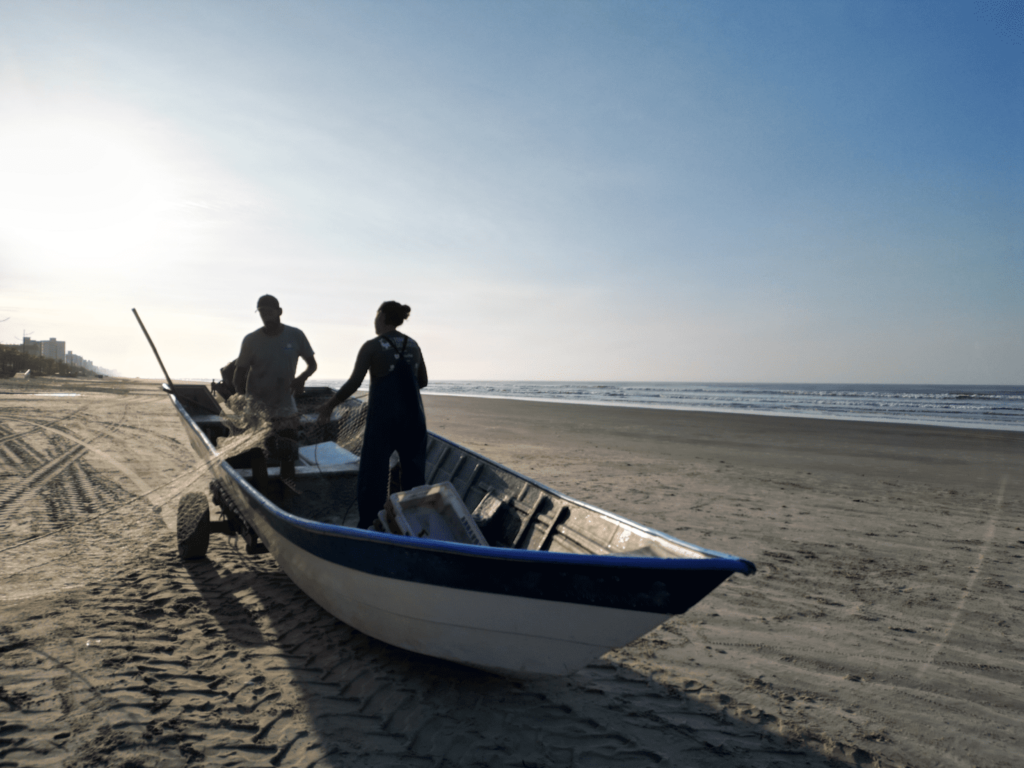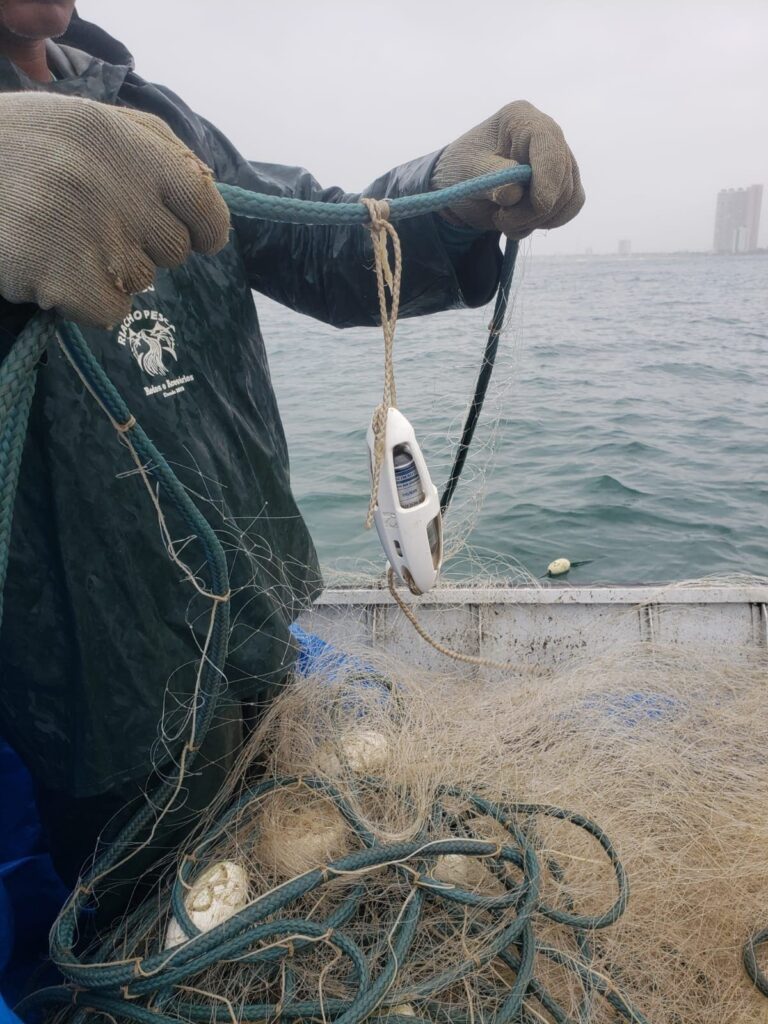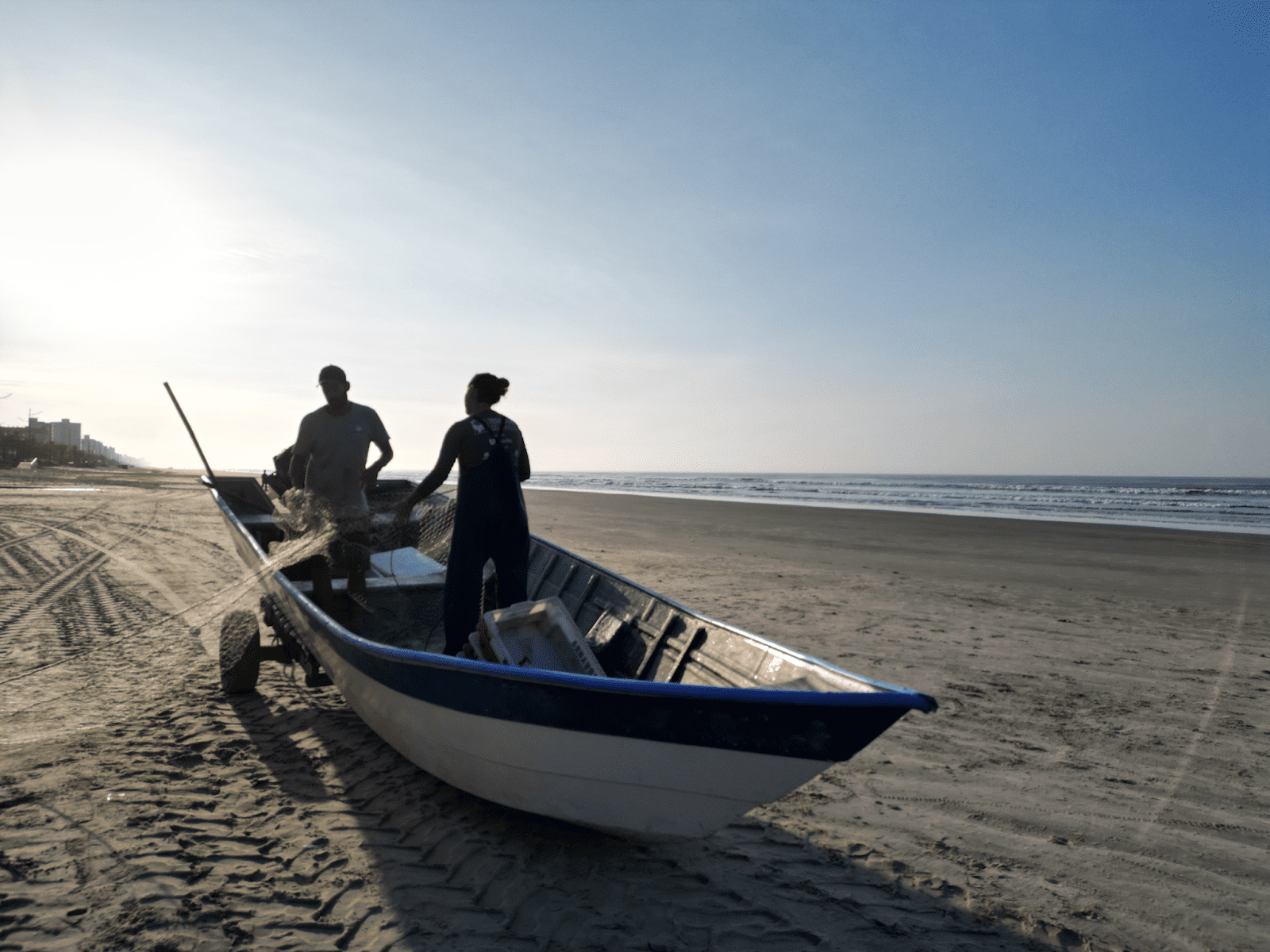Exciting news for the conservation of Brazilian marine biodiversity: the Toninhas do Brasil Project (i.e. “Franciscanas of Brazil Project”), a pioneer in the conservation of franciscana dolphins (Pontoporia blainvillei), has recently completed a pilot project using acoustic alarms, popularly known as “pingers”, on fishing nets. The study, carried out with the help of partner artisanal fishers, lasted approximately two years, from planning to results, and tested the equipment in various fishing conditions between the states of São Paulo and Santa Catarina. Initial analyses confirm that this could be an effective strategy to reduce the species’ bycatch and, when combined with other conservation measures, could represent a promising path for the future of the species.

Results that inspire hope
This technology, employed in fishing activities in Brazil for the first time, is the result of nearly a decade of investigations. The recent phase, lasting two years, monitored 223 fishing sets with nets equipped with pingers and nets without pingers. The presence of franciscana dolphins near the nets was monitored with acoustic detectors, totaling more than 4,700 hours of recordings, and the results are encouraging:
- 95% reduction in the presence of franciscana dolphins near gillnets with pingers: No bycatch registered in these nets.
- Pingers do not affect fishing: The quantity, weight, and size of the fish caught showed no statistical differences between nets with and without pingers.
- Partners’ approval: The partnering fishers reported that pingers did not interfere with or complicate the handling of the nets or the fishing process.
The study also included evaluations of environmental, operational, and socioeconomic aspects, as well as research in order to better understand the fisheries chain of production. Regular meetings were held with the participating fishers to gather their opinions on the equipment. Although results are still preliminary, and further analysis is needed, they are promising and show that the use of pingers can effectively help reduce bycatch of franciscana dolphins quickly and without harming fishing activities. “We understand that partnerships and dialogue with all the social actors involved are essential for the effectiveness of conservation actions, which is why the participation of fishers is indispensable,” emphasizes Renan Paitach, the project’s research coordinator.
Next step and Public Participation
Although the results are promising, the issue of franciscana dolphin bycatch is complex. The project will continue deepening its research to improve understanding of fishing effort, franciscana dolphin distribution, and the bycatch potential of different types of nets, so that the proposed solutions are as effective as possible.
Marta Cremer, head coordinator of Toninhas do Brasil, who has been working on the conservation of this small cetacean for over 20 years, argues that as researchers gather more – and better – data, more accurate conservation strategies can be proposed. ‘Only in this way can we propose the proper use of the pingers. “In this long process, the involvement of fishing communities, public managers, and society as a whole is essential,” concludes the researcher.

What are pingers?
Pingers are small devices that emit ultrasonic sounds, above 50 kHz, which only dolphins can hear.
In comparison, humans can only hear up to 20 kHz. Widely used in other countries, they are specifically designed to be attached to fishing nets to reduce dolphin bycatch, and they are automatically activated when submerged, functioning as a sound warning (a whistle) that keeps the animals away from the nets.
It is not entirely clear why franciscana dolphins and other dolphins become entangled in the nets, but with the presence of pingers, it is expected that the franciscana dolphin will sense something unusual and avoid getting too close. With a range of approximately 100 meters, it is recommended to use one pinger every 200 meters of net. Currently, these devices are not manufactured domestically.
To discuss this technology further and the study conducted by the project, the following video has been prepared:
About the Toninhas do Brasil Project
The Toninhas do Brasil Project is an initiative focused on the research and conservation of the franciscana dolphin (Pontoporia blainvillei), one of the smallest and most endangered dolphins on the planet. Projeto Toninhas do Brasil is a project by Univille, in partnership with Petrobras, through the Petrobras Socioambiental Program, which, for over 20 years, has carried out research, communication, environmental education, and institutional coordination efforts to protect coastal ecosystems. Bringing together a multidisciplinary team of professionals committed to the conservation of biodiversity and marine ecosystems, the project collaborates with various national and international institutions engaged in the subject and is a reference in Brazil and worldwide in the field of research and conservation of small cetaceans.

